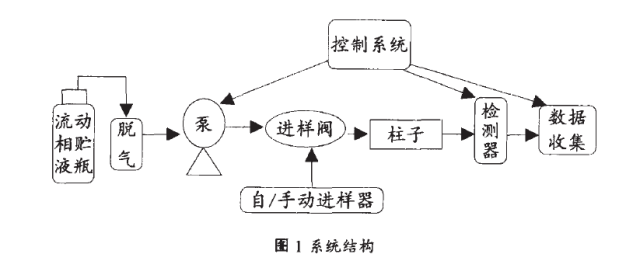As a high-precision instrument, HPLC can easily lead to some troublesome small problems if it is not operated in the correct way during use. One of the most common problems is the column compression problem. How to quickly troubleshoot a faulty chromatograph. The HPLC system mainly consists of a reservoir bottle, a pump, an injector, a column, a column temperature chamber, a detector and a data processing system. For the whole system, the pillars, pumps and detectors are the key components and the main locations that are prone to problems.
The key to column pressure is the area that needs close attention when using HPLC. The stability of column pressure is closely related to chromatographic peak shape, column efficiency, separation efficiency and retention time. Column pressure stability does not mean that the pressure value is stable at a stable value, but rather that the pressure fluctuation range is between 345kPa or 50PSI (allowing for the use of gradient elution when the column pressure is stable and slowly changing). Too high or too low pressure is a column pressure problem.
The most prone to HPLC failures and solutions
1, high pressure is the most common problem in the use of HPLC. This means a sudden rise in pressure. In general, there are the following reasons: (1) In general, this is due to flow channel blockage. At this point, we should examine it piecewise. a. First, cut off the inlet of the vacuum pump. At this point, the PEEK tube was filled with liquid so that the PEEK tube was smaller than the solvent bottle to see if the liquid was dripping at will. If the liquid is not dripping or dripping slowly, the solvent filter head is blocked. Treatment: Soak in 30% nitric acid for half an hour and rinse with ultrapure water. If the liquid drips randomly, the solvent filter head is normal and is being checked; b. Open the Purge valve so that the mobile phase does not pass through the column, and if the pressure is not significantly reduced, the filter white head is blocked. Treatment: Filtered whiteheads were removed and sonicated with 10% isopropanol for half an hour. Assuming that the pressure drops below 100PSI, the filtered white head is normal and is being checked; c. Remove the exit end of the column, if the pressure does not decrease, the column is blocked. Treatment: If it is a buffer salt blockage, rinse 95% until the pressure is normal. If the obstruction is caused by some more highly preserved material, a stronger flow than the present mobile phase should be used to rush towards normal pressure. If the long-term cleaning pressure does not decrease according to the above method, the inlet and outlet of the column can be considered to be connected to the instrument on the contrary, and the column can be cleaned with the mobile phase. At this time, if the column pressure is still not reduced, the column entrance sieve plate can only be replaced, but once the operation is not good, it is easy to lead to the reduction of the column effect, so try to use less. For difficult problems, column replacement may be considered.
(2) Incorrect flow rate setting: Correct flow rate can be reset.
(3) Incorrect flow ratio: the viscosity index of different proportions of flows is different, and the corresponding system pressure of the flow with higher viscosity is also larger. If possible, lower viscosity solvents can be replaced or re-set and prepared.
(4) System pressure zero drift: adjust the zero of the liquid level sensor.
2, the pressure is too low (1) is usually caused by system leakage. What to do: Find each connection, especially the interface at both ends of the column, and tighten the leak area. Remove the post and tighten or line the PTFE film with appropriate force.
(2) The gas enters the pump, but the pressure is usually unstable at this time, high and low. More seriously, the pump will not be able to absorb the fluid. Treatment method: open the cleaning valve and clean at a flow rate of 3~5ml/min. If not, air bubbles were aspirated at the exhaust valve using a dedicated needle tube.
(3) No mobile phase outflow: check whether there is a mobile phase in the reservoir bottle, whether the sink is immersed in the mobile phase, and whether the pump is running.
(4) The reference valve is not closed: the reference valve is closed after deceleration. It usually goes down to 0.1. ~ 0.2mL/ min after closing the reference valve.
Summary:
In this paper, only common problems in liquid chromatography are analyzed. Of course, in our practical application, we will encounter more other problems. In fault handling, we should follow the following principles: only change one factor at a time to determine the relationship between the hypothetical factor and the problem; Generally, when replacing parts for troubleshooting, we should pay attention to putting the dismantled intact parts back in place to prevent waste; Forming a good record habit is the key to the success of fault handling. In conclusion, when using HPLC, it is important to pay attention to sample pretreatment and proper operation and maintenance of the equipment.
Post time: 2025-07-02

